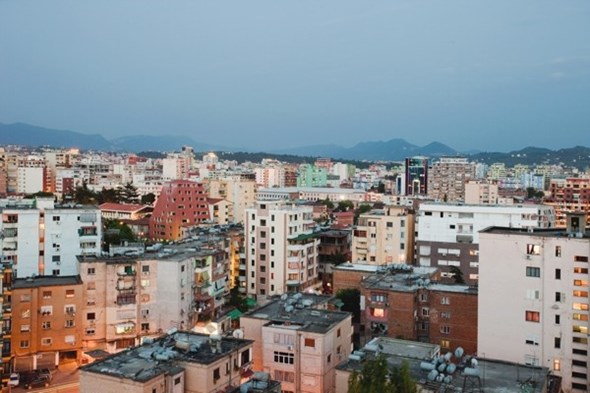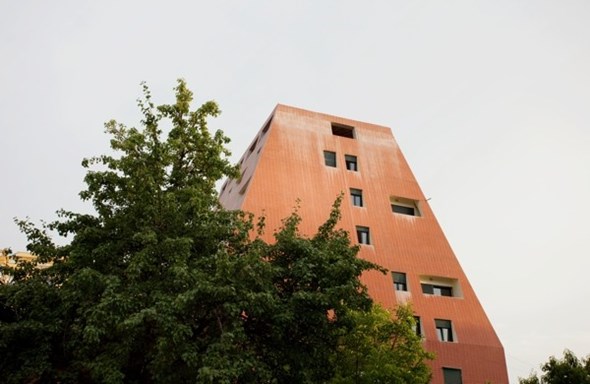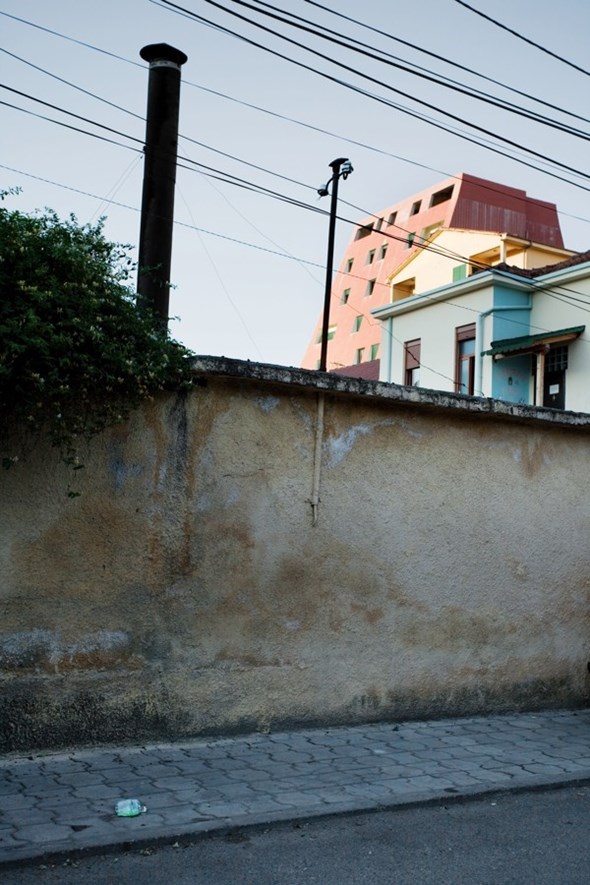

Michele D'Aurizio on a turbo-urban apartment house in Tirana by Genoese architects baukuh
The work of Italian architect and engraver Giambattista Piranesi corresponds, according to Herbert Muschamp, »to the moment in architectural history when power becomes differentiated from authority«: in fact, »there are no limits on the imagination of the architect who is able to confine his work to paper«, writes the architecture historian. Piranesi introduced the possibility of a subjective expression (unleashing its most hyperbolic manifestations) in a medium that is mythically devoted to an objectivity of a constructivist sort. One of the most chauvinistic arguments opposes the arbitrariness of the composition, a prerogative of the visual arts, against the impersonality of »gestalt«, the substance of the design disciplines. This »division of tasks« had a Romantic flavor to it that has since been degraded by the affirmation of new authoritative devices, followed by new forms of power.
In Xezhmy Delli Street in Tirana, the recently completed apartment building designed by the Genoese architecture studio baukuh is symptomatic of the impervious territory mined by the intersection of autarchic powers that bring about the uncontrollable and unexpected evolutions of the project within which contemporary architecture operates. baukuh’s project was begun in 2004, after the Berlage Institute of Rotterdam became involved in the urban planning of the city upon the request of the Mayor of Tirana, Edi Rama. The studio’s commission developed within the context of a series of international competitions presided over by, among others, Vedran Mimica and Elia Zenghelis (respectively director and member of the research board of the BI). Today, baukuh is currently working on a building in the city in Myslym Shizi Street, a master-plan for the area of the former military airport and a proposal for the regeneration of Skanderbeg Square. The building in Xezhmy Delli Street was finished without full supervision by the architects because of a change of the owner. Whereas the initial design included a concrete surface with the loggia and window openings covered with coloured tiles, the finished product is entirely covered in brick-coloured tiles, conferring a more naive local vernacular to the finished product than the architects’ original allusion to mannerist brutalism.
»baukuh searched for a uncontrolled beauty that fit to this specific context.«, Mimica wrote recently about the building. The project is a synthesis of Rama’s urban development programme, using the synergies between international architects and local builders which aims at delineating an authentic urban architectural culture, and the improvisational and adaptational characteristics shared by the new urban forms revealed in the Balkans in the frenzy of the reconstruction. The show Balkanology, held in 2008 at the Swiss Architecture Museum in Basel, referred to this aesthetic, common in the most recent urban-architectural interventions promoted in the capitals of the Balkan countries, as »turbo-architecture« (with a nod to the well-known musical phenomenon »turbofolk«) and questioned the effective capabilities of the processes of informal urbanism to create new urban typologies and forms. In Tirana, baukuh opted for a building that is technologically banal but surprisingly spacious, with its bizarre volume and rough appearance, emphasising its status as a »concatenation of contingent circumstances«, thereby shifting the role of architectural design from an unconditional complex of directives to an urban rhetoric gesture. Paradoxically, the peculiar prismatic shape of the building is derived by maximising the volumes permitted by local building regulations. It is thus a »deduced« form, obtained through »fusion« and »carving«, which makes it »tower over« the urban panorama in a Piranesi-like manner. baukuh made use of an anti-compositional and »bureaucratic« design, almost as if to affirm the abstractness of the building regulations in the heterotopic body of the city. »There is no building without regulations, and good architecture doesn’t always follow the rules« says one of the recent issues of Hunch, the Berlage Institute’s house publication. Clearing the irrefutability of the architectural brief and surpassing the dogmatism of architectural design may now contribute to generating new forms of power for the design disciplines.
Translated from Italian by Anne Ruzzante
MICHELE D’AURIZIO is an editorial assistant at the magazine Kaleidoscope, together with Eva Fabbris, he curates the exhibition and event program at the Kaleidoscope Project Space. He lives in Milan.

